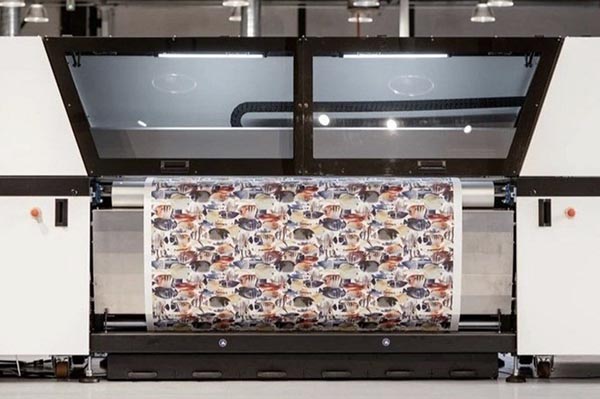
(Image courtesy of Texintel.)
The global digital textile printer industry is estimated to reach US$2,212.9 million in 2023 according to Future Market Insights. Over the forecast period 2023 to 2033, global sales of digital textile printers are expected to rise at 9.8% CAGR. This is projected to take the total market valuation to US$5,304.3 million by 2033.
Growth in the market is driven by continuously changing fashion trends, a high need for advanced printing technologies, and increasing demand for customized and personalized home décor.
The Market for Custom Textiles in the Home Décor and Furnishing Sector Is Experiencing Rapid Growth
Nowadays, people prefer fast fashion and exclusive products that can be customized and personalized according to their specific demands. Customers are willing to pay premium prices and actively seek out platforms and brands that cater to their custom home décor needs.
This trend is particularly evident due to the increasing purchasing power of Gen Z, who are more inclined towards online shopping. There is a strong demand for printed materials used in furniture. Consumers are increasingly looking for personalized and one-of-a-kind home furnishings, including curtains, upholstery fabrics, bedding, and cushions. This, in turn, is encouraging the adoption of digital textile printers.
Digital textile printers have emerged as ideal printing solutions, allowing for customization by enabling the printing of specific designs, patterns, colors, and even photographs on a wide range of home textile products. This personalization capability is significantly fueling the demand for digital printing within the home interior market.
Consumers’ shift to online shopping is another key factor driving the global digital textile printer industry.
Today’s consumers have elevated expectations, seeking pleasant and personalized shopping experiences and affordable and high-quality clothing aligned with seasonal trends. Online shopping platforms fulfill these demands through attractive offerings, such as seasonal sales and diverse apparel selections. The rising demand for fast fashion amplifies the importance of digital textile printers in the fashion sector, and the ongoing shift in customer preferences and choices toward online shopping is poised to accelerate market growth further.
Key Takeaways From The Digital Textile Printer Market Research Report
- The global digital textile printer industry is expected to reach a valuation of US$5,304.3 million by 2033.
- Based on ink, the pigment segment is forecast to expand at a CAGR of 11.1% through 2033.
- By printing process, the direct-to-garment segment is expected to hold a market share of around 50.2% in 2023.
- By end use, the clothing and apparel segment is projected to reach a valuation of US$3,474.0 million by 2033.
- The United States digital textile market value is anticipated to reach US$568.0 million by 2033.
- Digital textile printer demand in India is predicted to rise at 8.8% CAGR during the assessment period.
“Growing concerns over sustainability in the printing sector have increased demand for digital textile printers. Digital textile printers offer design flexibility and faster production rates. As a result, they are being widely used globally. Key companies are looking to develop advanced printing equipment to expand their customer base,” says a lead analyst at FMI
Digital textile printing offers several advantages over traditional dyeing, starting with its ability to reduce waste and address the water pollution caused by dyeing, which is known as the second leading global water polluter. Further, the agility and flexibility of digital production and textile printing allow manufacturers to efficiently handle both small boutique orders and large retail orders using the same equipment, making it an attractive option.
With a lower cost per print and the convenience of print-on-demand, fast production is possible, enabling profitability from orders of any quantity with just a single button push. Digital textile printing provides designers with nearly limitless graphic and color capabilities, surpassing traditional printing technologies. This freedom allows designers to unleash their creativity and produce unique designs.
The benefits extend to the supply chain as well.
Meeting production and shipping deadlines become easier with digital printing, thereby preventing overstocking. Designers can constantly produce new collections to keep up with ever-changing fashion trends, while customers can satisfy their desire for customized apparel, décor, and gift items.















Discussion
Join the discussion Sign In or Become a Member, doing so is simple and free